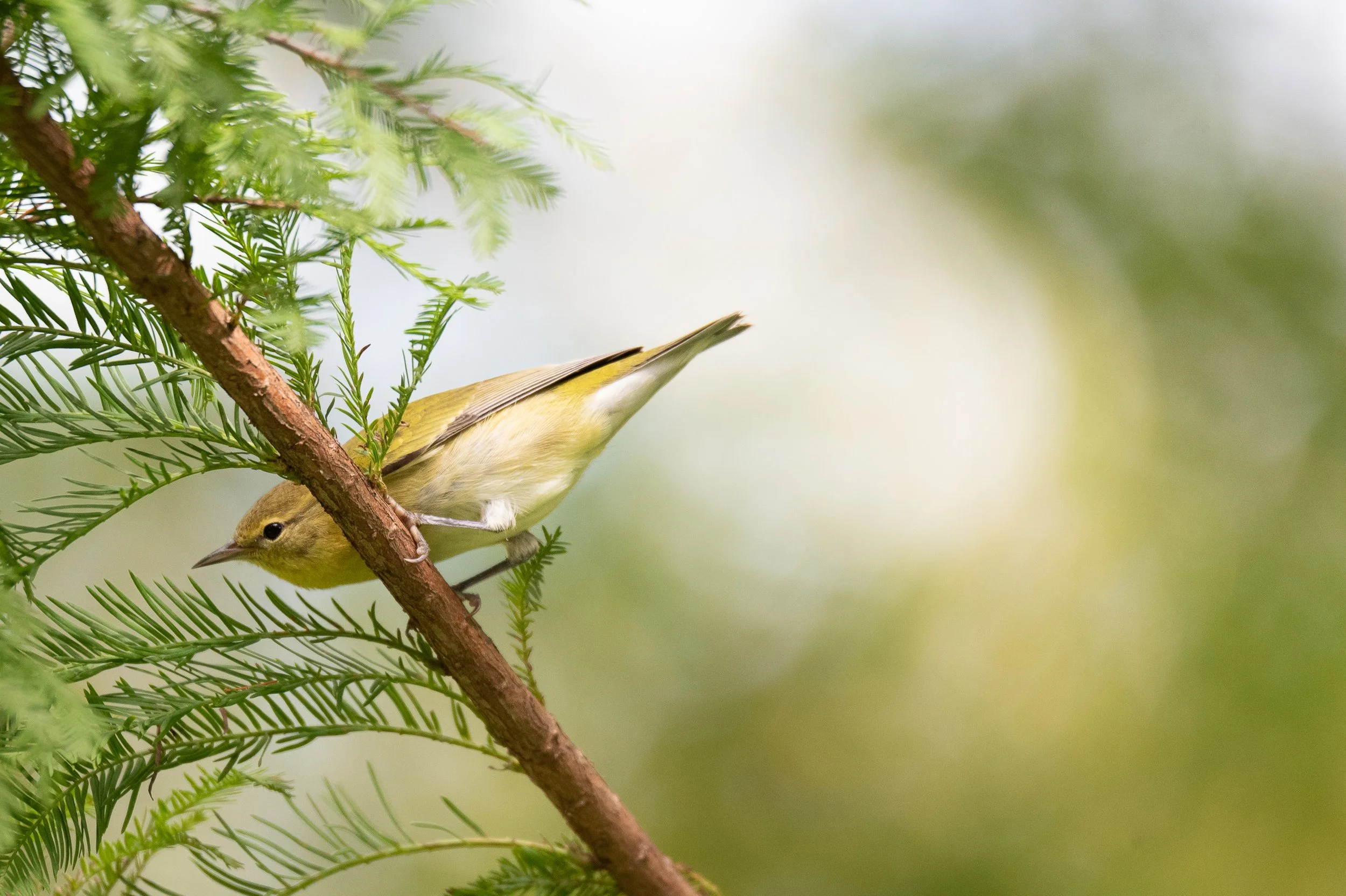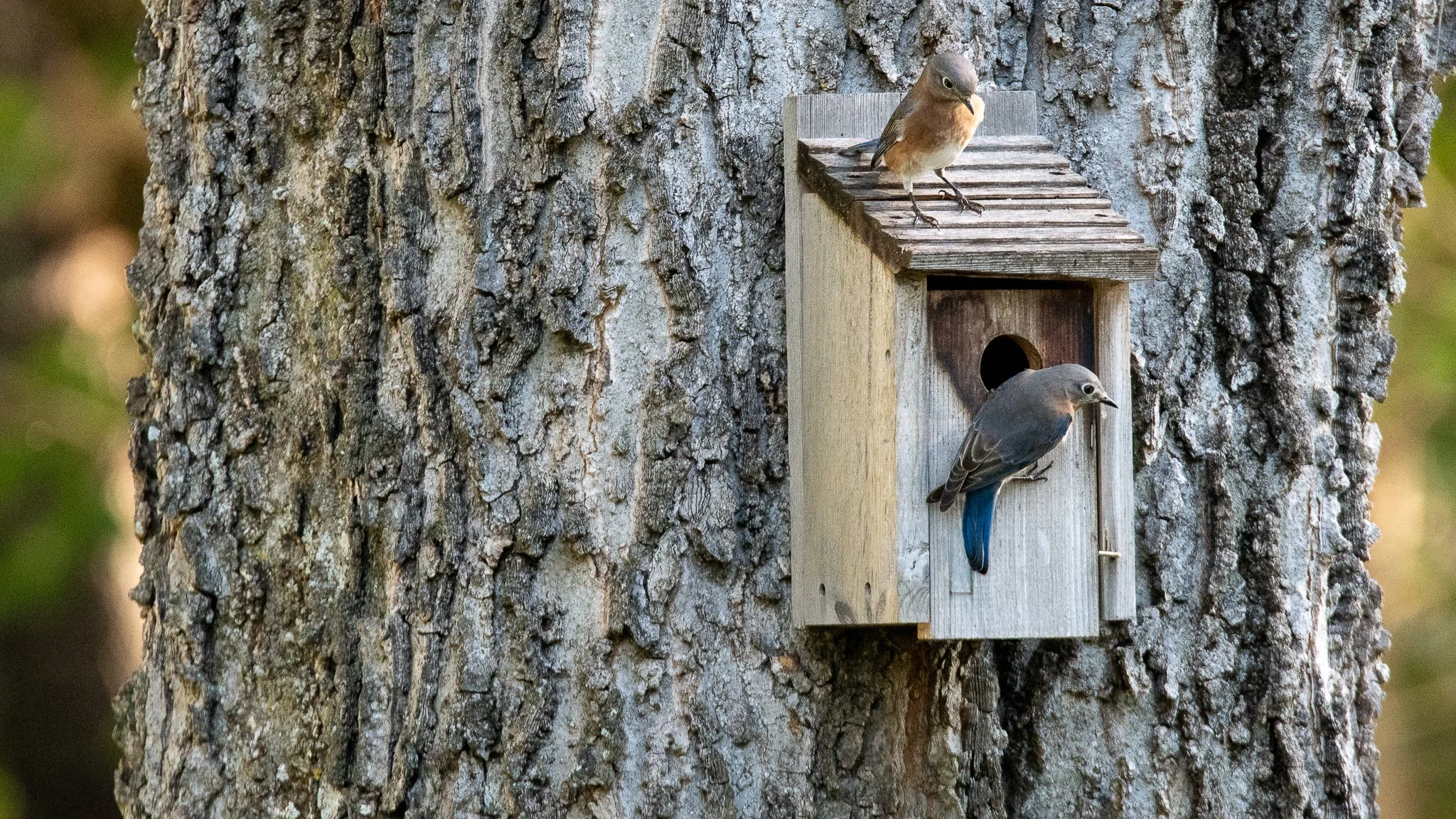Fall Migration, and Bluebirds
Fall Migration is underway, and it is making birding fun in the Mid-State! While birding along the Cumberland River this past weekend, I spotted several Great Egrets working the marshy sections off the main channel. Whilst exploring a pull-off near Cheatham Dam, my attention was drawn to a large Cyprus tree where I noticed several Yellow-rumped Warblers flitting between the roots. These are just a few of the numerous species that are passing through our area every day. Rose-breasted Grosbeak, Ruby-throated Hummingbird, Chimney Swift, Common Nighthawk, Summer Tanager are also being seen and heard daily.
Lights Out Program:
Did you know that many species actually migrate under the cover of darkness? According to BirdCast, the list of expected nocturnal migrants for this area includes Yellow-rumped Warbler, Summer Tanager, Eastern Wood-Pewee, Black-throated Green Warbler, Yellow-bellied Sapsucker, and many other species. In Davidson County alone on the night of October 1st into the morning of October 2nd, BirdCast, using weather radar, was able to detect an estimated 8,900,000 birds flying overhead! But how are these birds able to traverse distances of thousands of miles, mostly at night? Certain species, such as Indigo Buntings, have been proven to navigate using the stars! There is also evidence showing that thanks to short-lived molecules found in the bird’s eyes, known as radical pairs, they are actually able to visualize Earth’s magnetic field! Unfortunately, despite these incredible adaptations, birds migrating at night are extremely susceptible to light pollution. They can become disoriented and confused by bright lights, and with many song birds flying between 500-2500 feet, this can lead to collisions with buildings and electrical/communication towers which usually prove fatal.
Fortunately, there are things we can do to help. During peak migration months (September-early November) turning off non-essential lights from 11:00PM-6:00AM can greatly help. In addition, closing your blinds at night, dimming or pointing outdoor lighting down, and turning off outdoor decorative lighting can all have a positive impact in helping migratory birds reach their destination.
Bluebirds Exploring Boxes
Yesterday morning as I was getting into my car, I noticed a flurry of activity at my bluebird box. There was a pair of bluebirds taking turns perching on the box and looking inside it. This is actually quite a common occurrence this time of year, with us receiving multiple reports each fall of Bluebirds checking out boxes. We are not entirely sure what causes them to do this, although it could be a variety of factors; similar amounts of daylight to the spring, searching for prospective future nest sites, or identifying suitable spots to shelter on cold winter nights. Remember, it is always a good practice to clean the box after each nesting, so clean those boxes and keep your eyes peeled for this throwback to spring.
Eastern Bluebirds checking out a bluebird box on an October morning
Photo by Eli Haislip
Attached below are links to the article on how birds navigate in the dark, as well as BirdCast and the Lights Out Program!
https://www.scientificamerican.com/article/how-migrating-birds-use-quantum-effects-to-navigate/






